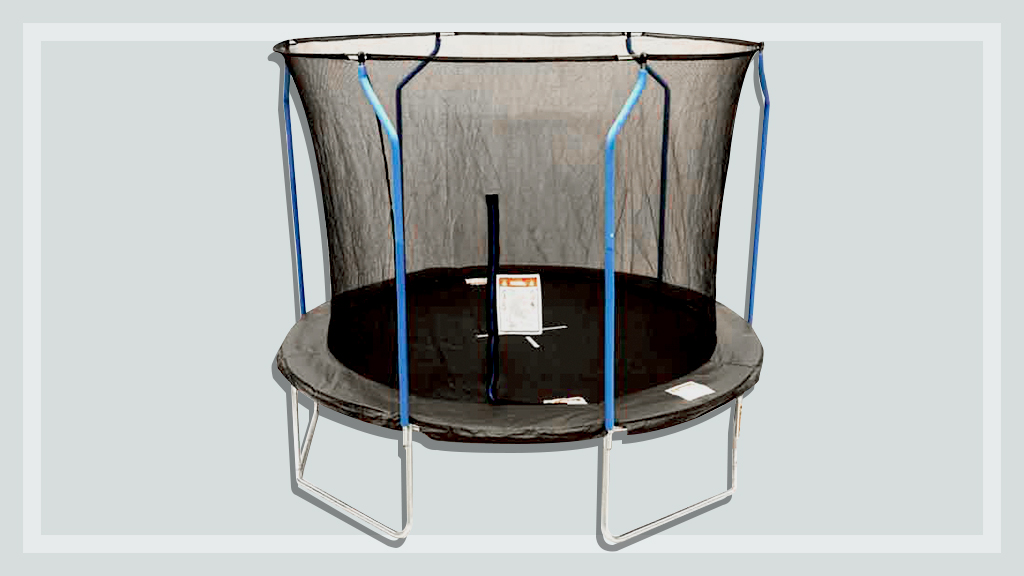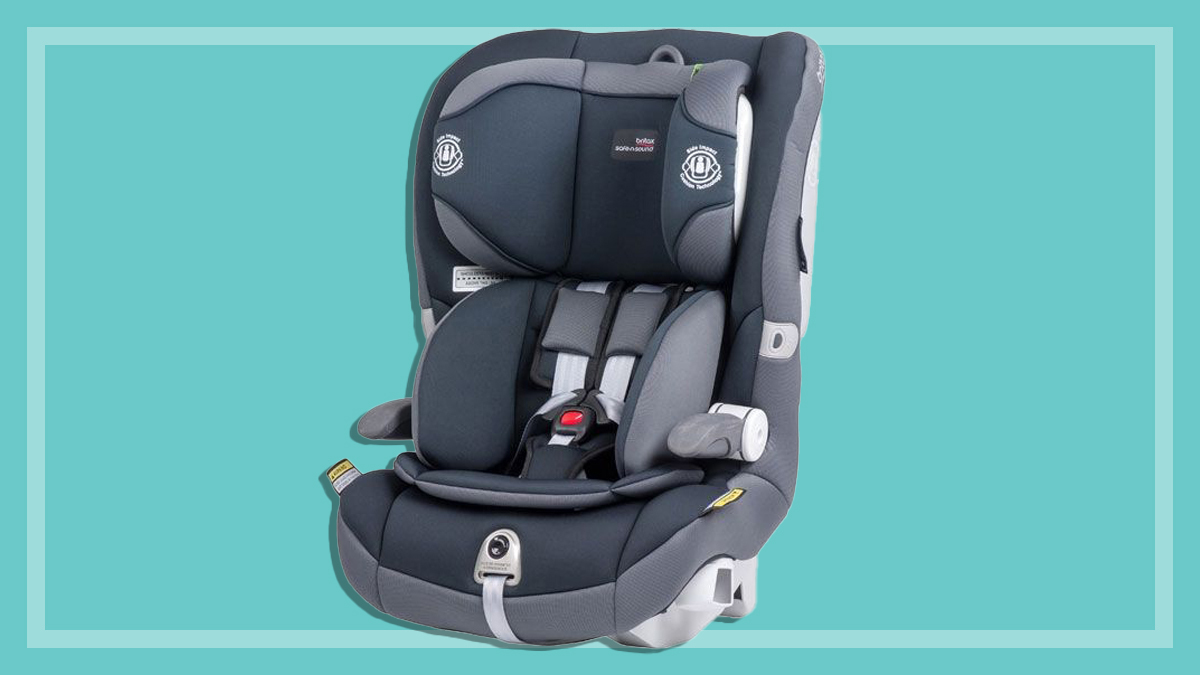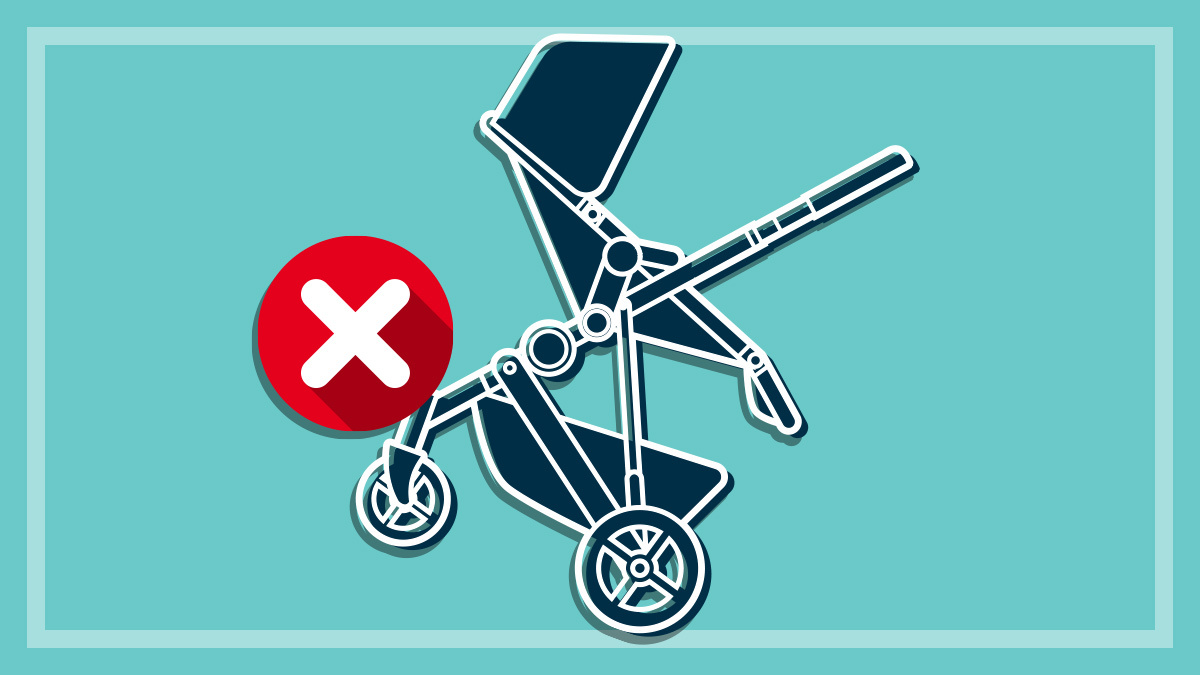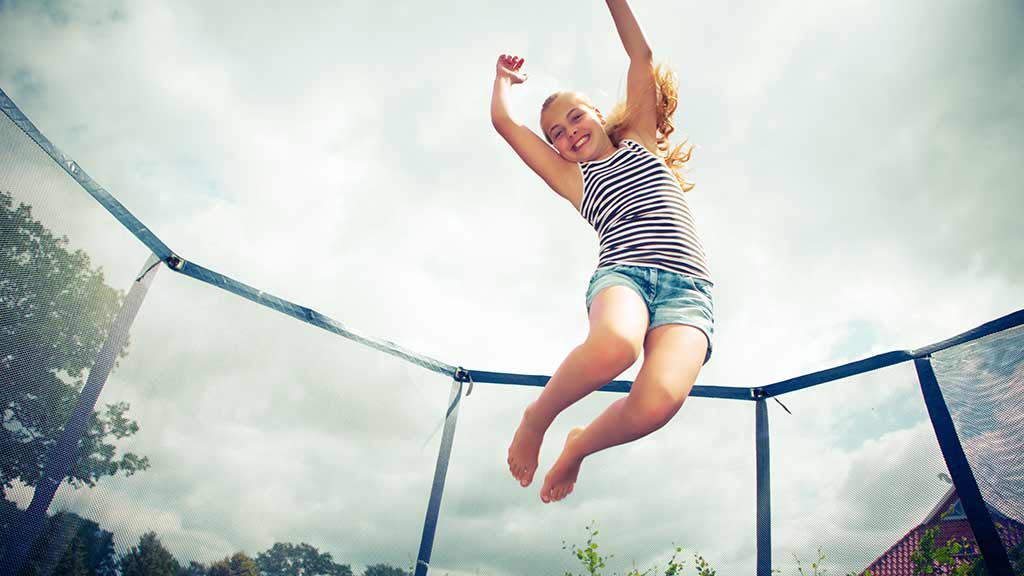Get our independent lab tests, expert reviews and honest advice.
How to choose a safe trampoline
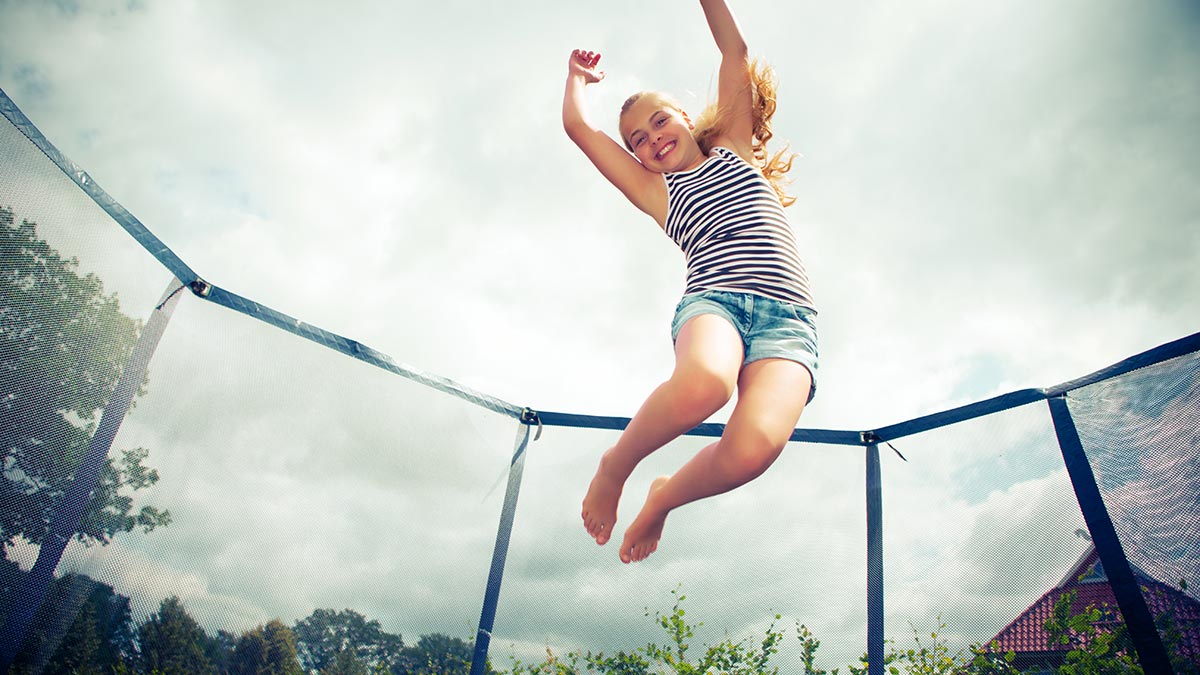
Trampolines are a backyard staple for many families, encouraging kids to get active outdoors and have hours of fun. But they’re also a very common source of injuries.
On this page:
- How to choose a safe trampoline
- Assembly and maintenance
- Using a trampoline safely
- Exercising on a trampoline
- The Australian standard
- Insuring against trouble
- How much do trampolines cost?
And while some of those injuries are not the fault of the trampoline (double backflip anyone?), our reviews have found that most of the tested trampolines failed to meet the Australian safety standard.
Here’s what you can do to find a good one and use it safely.
How to choose a safe trampoline
Safety padding
- The metal frame and springs should be padded to avoid injuries should a child fall and hit them.
- The safety pads should be a contrasting colour to the mat of the trampoline – this helps define the edge of the mat more clearly.
- The trampoline should meet the current Australian trampoline standard AS 4989:2015, but there’s no easy way for the average buyer to tell, other than looking for a statement of compliance to the standard.
- Springless models such as those from Springfree and Vuly have a soft-edge design, where the bounce comes from mechanisms such as fibreglass rods or steel leaf springs beneath the level of the jumping mat, so they don’t need a padded edge like the traditional spring models. Other springless models, such as the Kmart and Lifespan models in our latest test, use wide rubber bands instead of metal springs, but are otherwise built much like a traditional trampoline, so they do need padding over the rubber bands.
- Unfortunately, we’ve found in our trampoline reviews over the years that although most models came with safety padding, not all pass the safety tests.
Enclosure
- A netted enclosure helps prevent falls from the trampoline and we strongly recommend you only use trampolines that have one.
- It shouldn’t be suspended from unpadded rigid or stiff poles, as this introduces another hard object that could pose a risk to a child.
Ladder
- A ladder can be used to help kids get on and off a trampoline safely, but it should be removed when the trampoline is not in use.
- If a child is unable to get up there alone, they may not be at the right developmental stage to use a trampoline at all.
Instructions
- Instructions need to be clear, comprehensive and complete with good text and pictures. They should specify how to assemble the trampoline, maintain it and use it safely.
Assembly and maintenance
First, do you actually have the right space for a trampoline?
It should be placed on a level surface that’s free of hazards such as furniture, and the area around the trampoline should be covered in soft, impact-absorbing material.
Lawn, pine bark, wood chips or sand are good. Not paving or concrete – there’s too much risk of injury; from falling onto a hard surface.
You need two metres’ clearance on all sides and five metres overhead.
- Assembling a trampoline isn’t often an easy job – instructions can be complicated. If in doubt, contact the manufacturer for more detailed instructions and guidance.
- Fully read the instructions first, so you don’t miss a key step. Be patient and methodical.
- You’ll need two people at least to put the trampoline parts together.
- You can also check the manufacturer’s website for more timely safety advice or additional guidance.
- Some manufacturers also offer an installation service for an extra fee, which may be worth considering.
- Be careful – trampoline springs contain stored energy and some parts may be heavy and awkward to move and use, so follow safety instructions (and common sense).
- Check the trampoline regularly for tears, worn areas and bending in the bed, frame and safety enclosure. Before using, check that the area around and under the trampoline is free from obstacles. Inspect the frame and springs regularly for surface rust, corrosion and deterioration.
- Secure the trampoline legs to the ground. This will increase stability and help prevent the trampoline moving about when in use, or blowing over in a strong wind.
- In-ground installation, where the mat is at ground level over a pit, is an option to reduce fall heights and possible injury. But you’ll need to bear in mind that this will involve quite a lot of preparation (for example, pit drainage is essential).
- Rotate the safety padding periodically to minimise degradation at the enclosure entrance and sun exposure if some parts are protected by shade during the day. This will increase the length of time before the padding needs to be replaced.
Using a trampoline safely
Our reviews show that many trampolines have safety hazards. These include padding that isn’t durable enough, head entrapment hazards, and enclosures that don’t stand up to rough treatment. But these hazards can often be avoided by sensible use.
The bottom line: don’t rely on the trampoline to do all the safety work for you. Do your part by playing safely.
- Supervise children while they’re using the trampoline. Young kids especially (under six) should only use trampolines under close supervision.
- A safety enclosure can help prevent falls but it’s no substitute for good safety padding and a sturdy frame, or for sensible use of the trampoline.
- Even with an enclosure in place, kids still need to play safely on the trampoline and under adult supervision.
- Don’t let kids bounce against the netting on purpose.
- One child at a time on the trampoline. Accidents are more likely to occur when more than one child is playing on the trampoline.
- Large trampolines are not recommended for kids under six.
- Clear safety rules such as “one at a time”, “bare feet only”, and “do not use when wet” are good boundaries to set early on.
- Jump only in the middle of the trampoline and don’t jump off the trampoline when finished.
- To control bounce, teach your child to focus their eyes on the trampoline.
- If you have an older trampoline, consider getting it retrofitted with a frame padding system that’s compliant with the current standard. Or replace the old trampoline completely.
Are trampolines really that dangerous?
Trampolines are the second-biggest cause of hospital-treated injuries on play equipment, just behind monkey bars.
Children aged five to nine are the most frequently injured, though there’s also an alarming number of injuries to children aged under five.
There’s a common attitude that trampolines always have been and always will be inherently risky – that kids sometimes get hurt and that’s just how it is.
We don’t agree.
Many games and sports come with some risk, and kids are pretty good at collecting scrapes and bumps as they play – that’s part of life.
But there’s no reason to accept unsafe products, especially when standards exist to define good, safe design, and when products exist that meet those standards.
- A typical year sees thousands of trampoline-related injuries reported in Australia. These injuries – mostly to children – range from cuts and bruises to more serious sprains and fractures. And at least one death has been reported; in 2009, a five-year-old boy died when he became tangled in a clothesline that hung above the trampoline.
- Children can fall off or hit the side of the trampoline, bounce into one another, or be injured by a double bounce. Younger kids are at risk if they wander underneath and get hit when someone bounces above them.
- A 2015 study in the Australian and New Zealand Journal of Public Health found that from 2002 to 2011, an average of 1737 trampoline injuries requiring hospital admission were reported nationally each year, with an increase in the rate and frequency of injuries over that period. The great majority of these injuries were due to falls from the trampoline. The next most common cause of injury was collision between people (when more than one person was on the trampoline) and over-exertions. Typically, the injuries were fractures, but sprains, strains, dislocations and head injuries also occurred.
- Very young children are more prone to falls from trampolines. An Australian Institute of Health & Welfare study of 2017-18 hospital admissions found 555 hospital admissions for children aged one to four that were due to falls from trampolines; it was the most common type of fall injury from play equipment for that age group.
- The statistics above don’t include the many minor injuries from trampolining such as cuts and bruises, that may need first aid but not hospital admission. A 2007 baseline study of consumer product-related injuries conducted by ACCESS Economics estimated that there were 9006 accidents involving trampolines that year in Australia, with 11% of them requiring hospitalisation.
- In NSW, Westmead Children’s Hospital reported 86 trampoline-related injuries in 2005 which almost doubled to 153 injuries in 2008. In 2015, Melbourne’s Royal Children’s Hospital reported that admissions for trampoline injuries had nearly tripled over the past 10 years, and other states also reported an increase in these injuries. Some of that increased number can probably be attributed to the appearance of trampoline parks, but backyard trampolines are still a major cause of injuries.
- It may be that since most trampolines now have safety padding and enclosures, parents and children have become more complacent about safety. Injuries from collisions are common when several children play at the same time on the trampoline; head injuries in particular are all too common in this situation. The 2016 National Child Health Poll by the Royal Children’s Hospital Melbourne found that 66% of children who use a trampoline are not always supervised by an adult and that despite all the advice to the contrary, 80% of parents said they allowed multiple children to jump on a trampoline at once. Many injuries on trampolines can be avoided if an adult is there to prevent danger.
- And as our tests show, while an enclosure is an essential safety feature, it doesn’t absolutely guarantee safety: a child can still hit the frame edge or enclosure pole. They can even fall through the enclosure, such as when the opening is left unzipped, or if the enclosure is faulty or has weakened with age in the sun.
Exercising on a trampoline
Trampolines are a great way to exercise; not just fun, but effective too.
A 1980 study by NASA showed that rebounding on a trampoline is an excellent and efficient way to gain fitness as well as muscle and bone strength, more so than running on a treadmill.
Trampolining uses a wide range of leg and core muscles, and is good for improving coordination.
Trampolining uses a wide range of leg and core muscles, and is good for improving coordination
And the impact on your joints is relatively low, due to the mat absorbing some of the impact each time you land from a bounce, so it may be a better exercise option for people with bad knees than other forms of exercise such as running.
Even so, if you’re planning to use the trampoline for exercise, start slow and build your way up to more intensive workouts over time.
There are plenty of video guides online that show a range of exercises to try, such as squats, twists, single-leg bounces, jumping jacks and more.
Attempting a backflip?
One of the more popular challenges is learning to do a backflip. This is a difficult move and if you’re going to learn it, you should work your way up to it in stages: again, there are many guides online to help you.
A word of safety advice: some guides suggest you should have a partner to assist and advise you, which is definitely a good idea, but we don’t recommend that they stay on the mat with you while you’re attempting the moves. They should watch from outside the trampoline at that point.
The Australian standard
The current Australian standard for trampolines, AS 4989:2015, is only voluntary. So while we expect manufacturers to strive to meet this standard, they’re not required by law to do so.
Several manufacturers we’ve spoken to do support the standard, and some even take part in the standards committee.
We strongly believe that the Australian standard for trampolines should be made mandatory
The standard specifies performance tests for the padding or soft-edge system, to ensure it will properly protect a child’s head in the event of a fall or impact, as well as requirements for instructions, labels and safety warnings.
It also requires the trampoline to have a safety enclosure (net) and includes tests to check that the enclosure is free from strangulation hazards, limb entrapments and other hazards, and that the frame and enclosure are structurally safe and sound.
We strongly believe that the Australian standard for trampolines should be made mandatory. This will help weed out the more dangerous and flimsy trampolines from the market.
RELATED: No child should be put in hospital because of dangerous products, whether it’s trampolines, button batteries or anything else. Sign our petition calling for the government to make it illegal to sell unsafe products.
Insuring against trouble
If you or a household member is seriously injured while using your trampoline, then your health insurance policy may come into play, especially if you need an ambulance or ongoing treatment.
But what if the injured person is a visitor?
And what happens if strong winds hit your area and blow your trampoline into the neighbour’s yard, causing injury or damage? (It can happen!)
Home and contents insurance usually includes legal liability insurance, which covers you when a visitor suffers injury, death or property damage at your home. If the visitor makes a claim against your liability insurance (to cover their medical costs, for example) then you might need to pay an excess, but you’re unlikely to face any further expenses.
The case of the flying trampoline is more complicated. If you’ve taken all reasonable steps to anchor it down, then any damage caused by the trampoline flying into a neighbour’s property during a storm may instead by covered by the neighbour’s own insurance, as storm or impact damage.
If you didn’t anchor it adequately (or at all) you may be regarded as liable, in which case your liability insurance could come into effect.
And if the damage in question is to the boundary fence, then usually 50% of that repair cost falls to your neighbour.
Insurance policies can have a range of limitations on “contents in the open air”; for example, the policy might specifically cover only outdoor furniture and barbecues, or specific events such as storms, or have a dollar limit for the benefit you can claim.
Any of the above circumstances could get messy quickly, so it’s a good idea to check with your home and contents insurer as to how they would treat such incidents and how your trampoline is covered by your policy.
How much do trampolines cost?
A typical 10-foot round trampoline, such as the ones in our review, costs anywhere from under $549 to about $2099.
We’ve found that price isn’t necessarily an indicator of quality. Most trampolines fail one or another of our safety and durability tests, whether they are cheap or more expensive models. Some cheap trampolines turn out to be solidly made, but may have other safety issues such as head entrapment hazards, while some more expensive models can fail structural durability tests.

